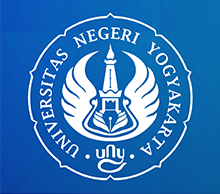Keywords
pseudo nearest neighbor rule, classification, color features, beef and pork, halal food
Document Type
Article
Abstract
This research is motivated by the need for halal foods in Muslim society with the purpose of avoiding non-halal foods, such as pork, that are sold in the market. Although beef and pork basically have different characteristics, not all Muslims know the differences. Moreover, people nowadays sell beef mixed with pork to obtain more profits. Hence, this paper proposed the implementation of the Pseudo-Nearest Neighbor Rule (PNNR) in classifying images of beef and pork slices based on color features. Based on the image dataset that has been collected, the very significant difference that can be identified visually between beef and pork is the color. The color features were extracted from the image using a color histogram from two different color channels, RGB and HSV. As the result, PNNR that used color features from the RGB channel achieved up to 87.43% accuracy, while using the HSV channel, it can reach up to 93.78% of accuracy. Additionally, this paper evaluates the stability of the proposed method by assessing the variance of classification accuracy across different values of k. It is also noticed that PNNR's performance is relatively consistent for various values of k compared to the traditional kNN algorithm.
First Page
156
Last Page
163
Page Range
156-163
Issue
2
Volume
8
Digital Object Identifier (DOI)
10.21831/elinvo.v8i2.64810
Source
https://journal.uny.ac.id/index.php/elinvo/article/view/64810
Recommended Citation
A. A. Baiti et al., "Classification of Beef and Pork Images Based on Color Features and Pseudo Nearest Neighbor Rule,", vol. 8, no. 2, pp. 156 - 163, Dec 2023.
The definitive version is available at https://doi.org/10.21831/elinvo.v8i2.64810
References
C. Reviews, "Impact of Pork Consumption on Human Health," vol. 7, no. 03, pp. 2442-2447, 2020.
S. A. Laga and R. Sarno, "Optimal sample temperature of electronic nose for detecting beef and pork mixture," 2019 International Conference on Information and Communications Technology, ICOIACT 2019, pp. 398-402, 2019, doi: 10.1109/ICOIACT46704.2019.8938492.
R. Sarno, K. Triyana, S. I. Sabilla, D. R. Wijaya, D. Sunaryono, and C. Fatichah, "Detecting Pork Adulteration in Beef for Halal Authentication using an Optimized Electronic Nose System," IEEE Access, vol. 8, pp. 25-30, 2020, doi: 10.1109/ACCESS.2020.3043394.
I. Tazi, N. Laila Isnaini, and A. Ainur, "Principal Component Analysis (PCA) Method for Classification of Beef and Pork Aroma Based on Electronic Nose," Indonesian Journal of Halal Research, vol. 1, no. 1, pp. 5-8, 2019, doi: 10.15575/ijhar.4155.
D. R. Wijaya, R. Sarno, and A. F. Daiva, "Electronic nose for classifying beef and pork using Naïve Bayes," Proceedings - 2017 International Seminar on Sensor, Instrumentation, Measurement and Metrology: Innovation for the Advancement and Competitiveness of the Nation, ISSIMM 2017, vol. 2017-Janua, pp. 104-108, 2017, doi: 10.1109/ISSIMM.2017.8124272.
U. Sudibyo, D. P. Kusumaningrum, E. H. Rachmawanto, and C. A. Sari, "OPTIMASI ALGORITMA LEARNING VECTOR QUANTIZATION (LVQ) DALAM PENGKLASIFIKASIAN CITRA DAGING SAPI DAN DAGING BABI BERBASIS GLCM DAN HSV," Jurnal SIMETRIS, vol. 9, no. 1, 2018.
J. Jasril and S. Sanjaya, "Learning Vector Quantization 3 (LVQ3) and Spatial Fuzzy C-Means (SFCM) for Beef and Pork Image Classification," Indonesian Journal of Artificial Intelligence and Data Mining, vol. 1, no. 2, p. 60, 2018, doi: 10.24014/ijaidm.v1i2.5024.
E. I. Sela and Sutarman, "Extracting the potential features of digital panoramic radiograph images by combining radio morphometry index, texture analysis, and morphological features," Journal of Computer Science, vol. 14, no. 2, pp. 144-152, 2017, doi: 10.3844/jcssp.2018.144.152.
E. I. Sela and R. Pulungan, "Osteoporosis identification based on the validated trabecular area on digital dental radiographic images," Procedia Comput Sci, vol. 157, pp. 282-289, 2019, doi: 10.1016/j.procs.2019.08.168.
S. Ayu Aisah, A. Hanifa Setyaningrum, L. Kesuma Wardhani, and R. Bahaweres, "Identifying Pork Raw-Meat Based on Color and Texture Extraction Using Support Vector Machine," 2020 8th International Conference on Cyber and IT Service Management, CITSM 2020, no. c, 2020, doi: 10.1109/CITSM50537.2020.9268892.
L. Handayani et al., "Comparison of target Probabilistic Neural network (PNN) classification for beef and pork," J Theor Appl Inf Technol, vol. 95, no. 12, pp. 2753-2760, 2017.
O. D. Nurhayati and I. P. Hastuti, "Metode Moment Invariant Geometrik untuk Menganalisis Jenis Daging Babi dan Daging Sapi," Jurnal Sistem Informasi Bisnis, vol. 8, no. 2, p. 67, 2018, doi: 10.21456/vol8iss2pp67-72.
J. Chairunnisa et al., "Pork and Beef Features Extractions," Proceedings - 2018 International Seminar on Application for Technology of Information and Communication: Creative Technology for Human Life, iSemantic 2018, pp. 295-298, 2018, doi: 10.1109/ISEMANTIC.2018.8549765.
K. Adi, S. Pujiyanto, O. D. Nurhayati, and A. Pamungkas, "Beef Quality Identification using Color Analysis and K-Nearest Neighbor Classification," in 2015 4th International Conference on Instrumentation, Communications, Information Technology, and Biomedical Engineering (ICICI-BME), Bandung, 2015, pp. 180-184.
Y. Zeng, Y. Yang, and L. Zhao, "Pseudo nearest neighbor rule for pattern classification," Expert Syst Appl, vol. 36, no. 2 PART 2, pp. 3587-3595, 2009, doi: 10.1016/j.eswa.2008.02.003.



